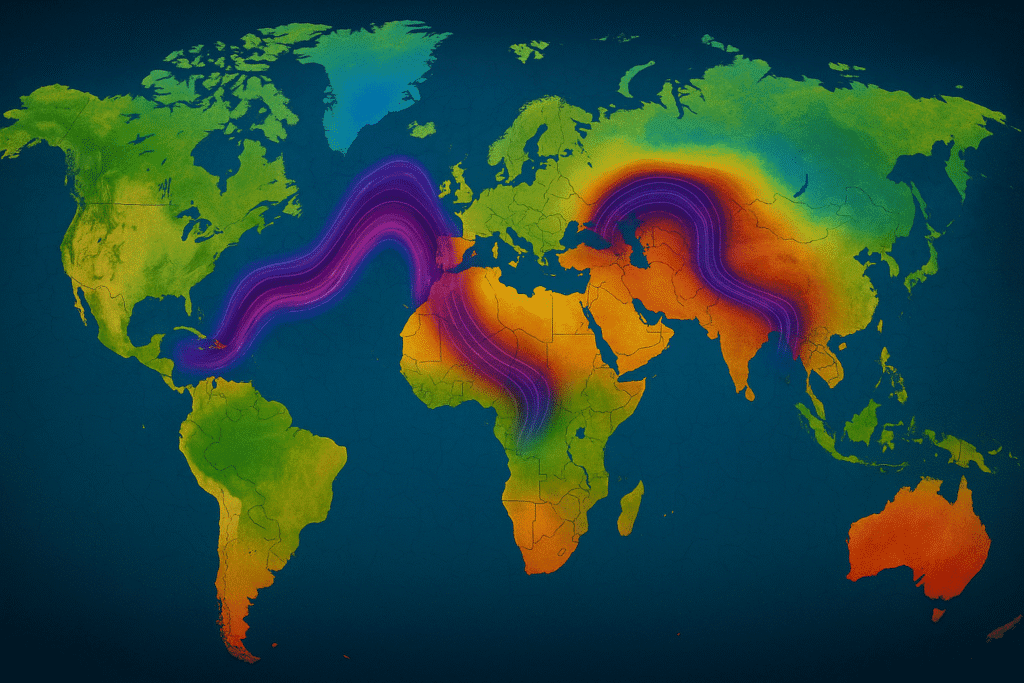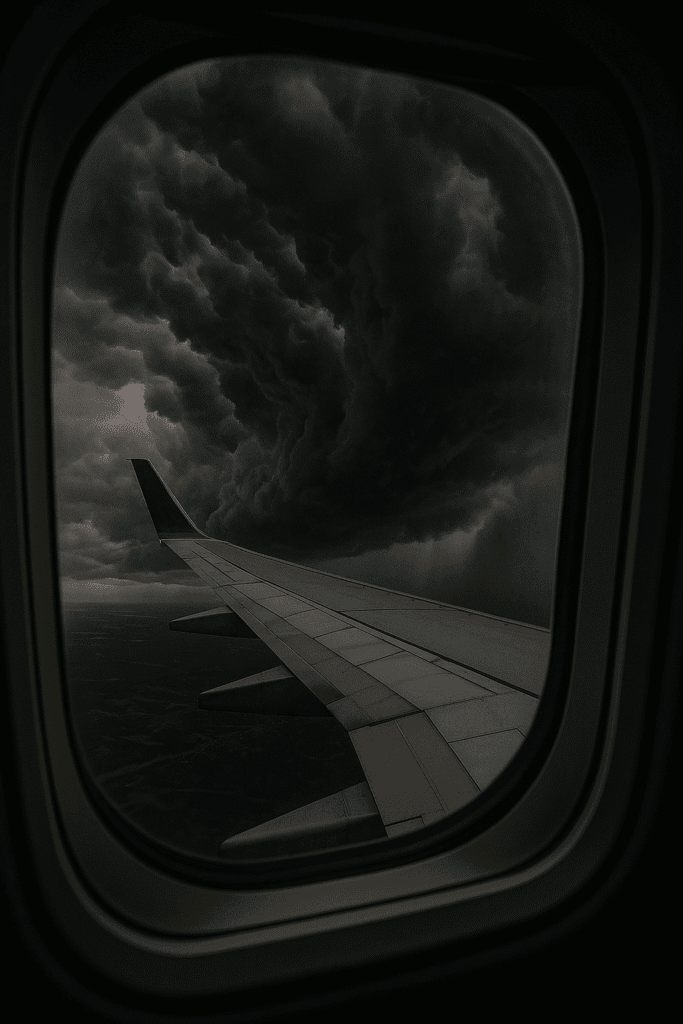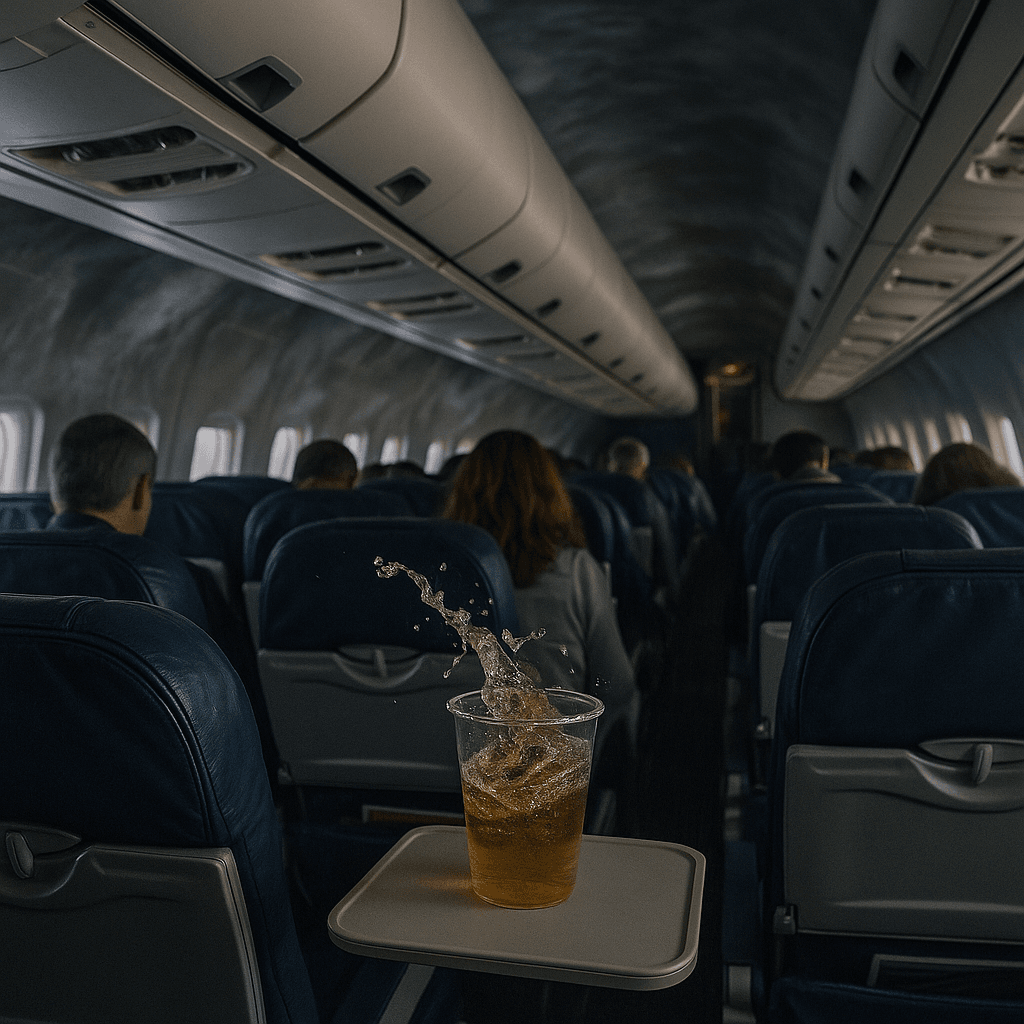Introduction: Why This Matters Now
For decades, turbulence during a flight was treated as a minor annoyance — a few bumps, maybe a shaky drink, and then smooth skies again. But in recent years, airplane turbulence has become not only more common but noticeably more intense. What used to be occasional discomfort is now increasingly becoming a safety risk, leading to injuries, emergency landings, and shaken passengers.
In this blog, we’ll dive deep into:
- What causes turbulence
- Why airplane turbulence is increasing worldwide
- The role of climate change
- The dangers of clear-air turbulence
- How the aviation industry is responding
- What travelers can do to stay safe
Let’s break it down with logic, facts, and clarity.
What Is Airplane Turbulence?
Turbulence is defined as unstable air movement that disrupts the smooth flow of air over an aircraft. It can be caused by several factors:
- Jet streams (fast-flowing air currents)
- Thunderstorms and cumulonimbus clouds
- Mountain ranges (mechanical turbulence)
- Wake airplane turbulence from other aircraft
- And most critically, clear-air turbulence (CAT) — invisible and unpredictable
Key Insight:
Turbulence isn’t always related to bad weather. In fact, some of the most dangerous turbulence occurs in completely clear skies, without a single cloud in sight. That’s what makes it harder to detect and avoid.
Also read : Was Mahabharata a Nuclear War?
Climate Change and the Airplane Turbulence Connection

The Scientific Explanation
As greenhouse gases warm the planet, upper-atmosphere jet streams are becoming more erratic. These streams of fast-moving air — which pilots often use for smoother and faster travel — are becoming unstable.
This leads to:
- Stronger wind shear: the variation in wind speeds between different layers of the atmosphere.
- Sharper gradients in air temperature and pressure.
- These conditions amplify clear-air turbulence, which cannot be seen on radar.
According to studies by Paul Williams, Professor of Atmospheric Science at the University of Reading, the frequency of severe turbulence is projected to double or even triple by 2050–2080 on major flight routes such as transatlantic flights.
Real-World Evidence
- In 2023, 37 people were injured during a severe turbulence incident on a Singapore Airlines flight.
- In 2022, 11 passengers on a Hawaiian Airlines flight were hospitalized.
- Airlines are reporting an increase in unexpected turbulence incidents, particularly over regions like the North Atlantic.
Clear-Air Turbulence (CAT): The Invisible Danger
Clear-air turbulence occurs at high altitudes, typically near the jet stream, and there are no visual cues — no clouds, no storms, no warnings. It can strike suddenly, and it’s the kind that throws unbelted passengers into the ceiling.
Why it’s particularly dangerous:
- Not detectable with traditional onboard radar
- Cannot be forecast with high accuracy
- Happens at cruising altitude where people are relaxed and often not wearing seatbelts
Logical Consequence:
Even though aviation technology is evolving, aircraft still rely heavily on visual and radar-based weather systems, which are ineffective against CAT. That makes forecasting harder — and flying riskier.
Data: How Common Is Turbulence?
- FAA data shows more than 5,000 turbulence-related incidents globally every year.
- Most occur between altitudes of 30,000–39,000 feet, affecting long-haul flights.
- 75% of in-flight weather-related injuries are due to turbulence, not lightning or storms.
And yet, turbulence affects only 0.014% of all flights — so statistically rare, but still dangerous due to its unpredictability.
Why Is It Getting Worse Now?

1. Rising Global Temperatures
As Earth’s atmosphere warms, the temperature contrast at flight altitudes is increasing. This creates more instability, especially over oceans where most long-haul flights travel.
2. Increased Air Traffic
More planes in the air = more risk. Modern aircraft fly higher and closer to jet streams, which increases the probability of turbulence encounters.
3. Weaker Early Warning Systems
Due to budget cuts and under-resourced meteorological teams (especially in the US and parts of Asia), real-time turbulence forecasting systems are limited. Pilots often depend on reports from other aircraft — a reactive rather than proactive method.
What Are Airlines Doing?
- Airlines like Delta and United are now investing in machine-learning-based turbulence detection systems.
- Advanced aircraft (like the Airbus A350 or Boeing 787) are equipped with turbulence monitoring sensors that detect wind shear and pressure changes.
- Crews are being trained to respond faster and communicate real-time data to air traffic control and other pilots.
However, the global aviation network still lacks unified data sharing, which limits early detection of invisible turbulence across continents.
What Can Passengers Do?
Here are a few proactive safety steps every flyer should follow:
✅ Always wear your seatbelt, even when the sign is off.
✅ Avoid standing during cruising altitude unless necessary.
✅ Choose seats over the wings — less motion is felt there.
✅ Listen to crew instructions — especially when turbulence is expected.
✅ Be cautious in the galley or restrooms during flight.
What Lies Ahead?
With global air travel expected to double by 2040, and climate models forecasting more unstable air currents, severe turbulence may become a routine threat.
Future aircraft will need:
- Better weather tech
- AI-powered prediction systems
- Stronger policies on seatbelt enforcement
- Greater public awareness — because prevention starts with understanding
Final Thoughts
Turbulence is no longer just a mild inconvenience — it’s evolving into a serious flight hazard, fueled by a warming climate and lagging infrastructure. But the more we understand it, the better we can adapt — as travelers, as airlines, and as a global system.
This is your wake-up call from 35,000 feet.






